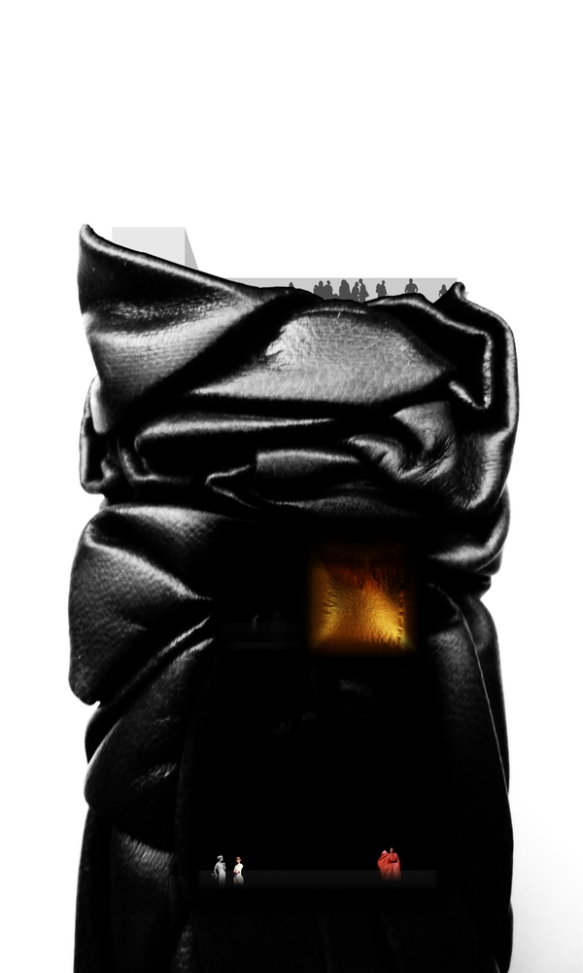F+ taking a look at ‘Kuro Maku’ a fashion museum by Abre Etteh, which takes the notion of modern day fashion being how we define our personal image. Breaking down how we perceive clothing from its nature as a fashion piece, its ability to inhabit space, and its ability to act upon others. The fashion world is every changing landscape as each day brings about a new trend. The project stands and a blank canvas to showcase designers of past and future. Check it out after the jump!
SCHOOL: Kingston University
STUDENT: Abre Etteh
COURSE: Competition – Honorable Mention
YEAR: 2010
“The brief of this competition was to create a 100m high tower in the Omotesando area of Tokyo, housing a fashion museum.
Never has it been truer than in the 20th century that ‘you are what you wear’. Our desire for fashion is a desire for uniqueness, for identity and for belonging. Fashion has become a technique for the self to project an image to other selves as a means of objectifying its identity. Paradoxically, aside from presenting a means of asserting uniqueness, fashion brings us closer to other selves through trends within cultural sub-groups. We use trends as a means of mirroring the attributes of the trend setter we desire to emulate, be they power, wealth or sex appeal. Fashion trends are thus a form of rhetoric, intent on influencing others conceptions of our selves. Consequently, fashion trends paint a moving picture of the self at any given point in history.
In the middle of the Tokugawa dynasty, many merchants became rich. However, government approved robes made it against the law to dress richly. Some took to wearing expensive silk under-garments beneath their sanctioned robes. This anecdote serves as an illustration of the dichotomy between belonging and uniqueness seen in Fashion.
With this in mind, the fashion museum could present more than the historical development of the discipline. The museum, through analysing global and local trends, provides the visitor with a new source of cultural anthropology. To do this, the museum gathers real-time data – through coolhunters – on emergent trends and presents them through open dialogue to reveal their influence and ideological roots.
Fashion also represents a means of exploring the aesthetics of the body and the connection of self to body. The museum also works to highlight and promote the works of established and up and coming designers. It also invites fashion designers to explore links between clothing, fashion, architecture and urban space.
The name Kuro Maku refers to the black curtain used in Kabuki theatre to obscure the visual cacophony of frantic backstage activities but also works as a mute backdrop to the performance front of house. Similarly, clothing acts as a performative tool we use to convey information about ourselves. The façade aims to produce a visceral bodily reaction in observers. The scale of the tower is distorted by the creases, folds and crimps of the rubber façade, which is more akin to the soft architecture of clothing and the scale of the somatic.
By means of a Chiaroscuro effect, the interior spaces create a sense of weight to make the visitor become increasingly aware of their bodies and others within the spaces. In certain spaces, this effect blurs the distinction between the inanimate exhibits and the spirited observers.” – Abre Etteh
All Images and Text via www.architectureserved.com












